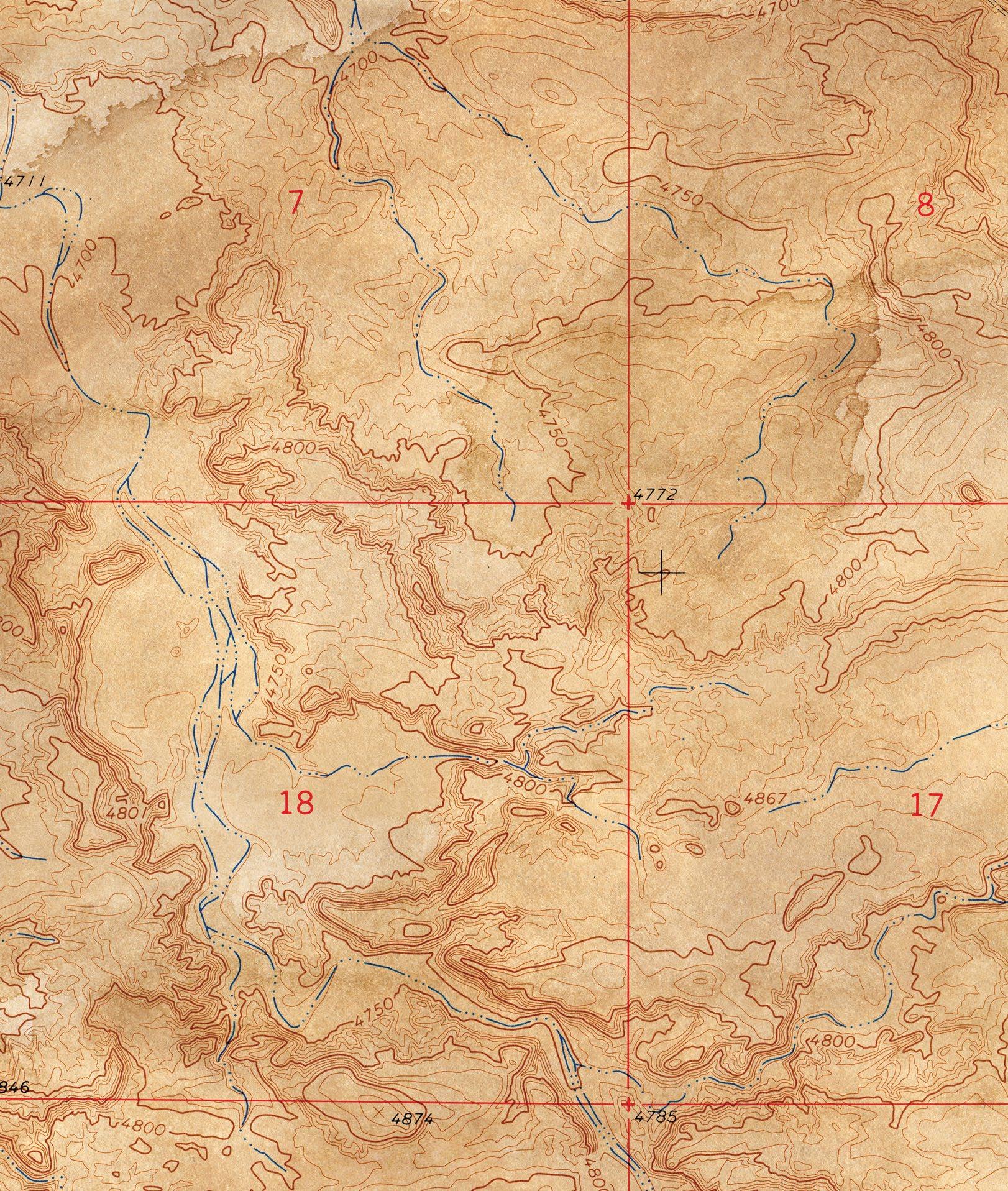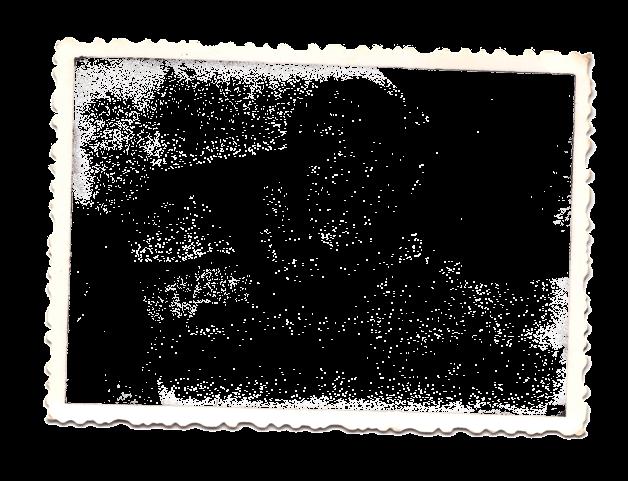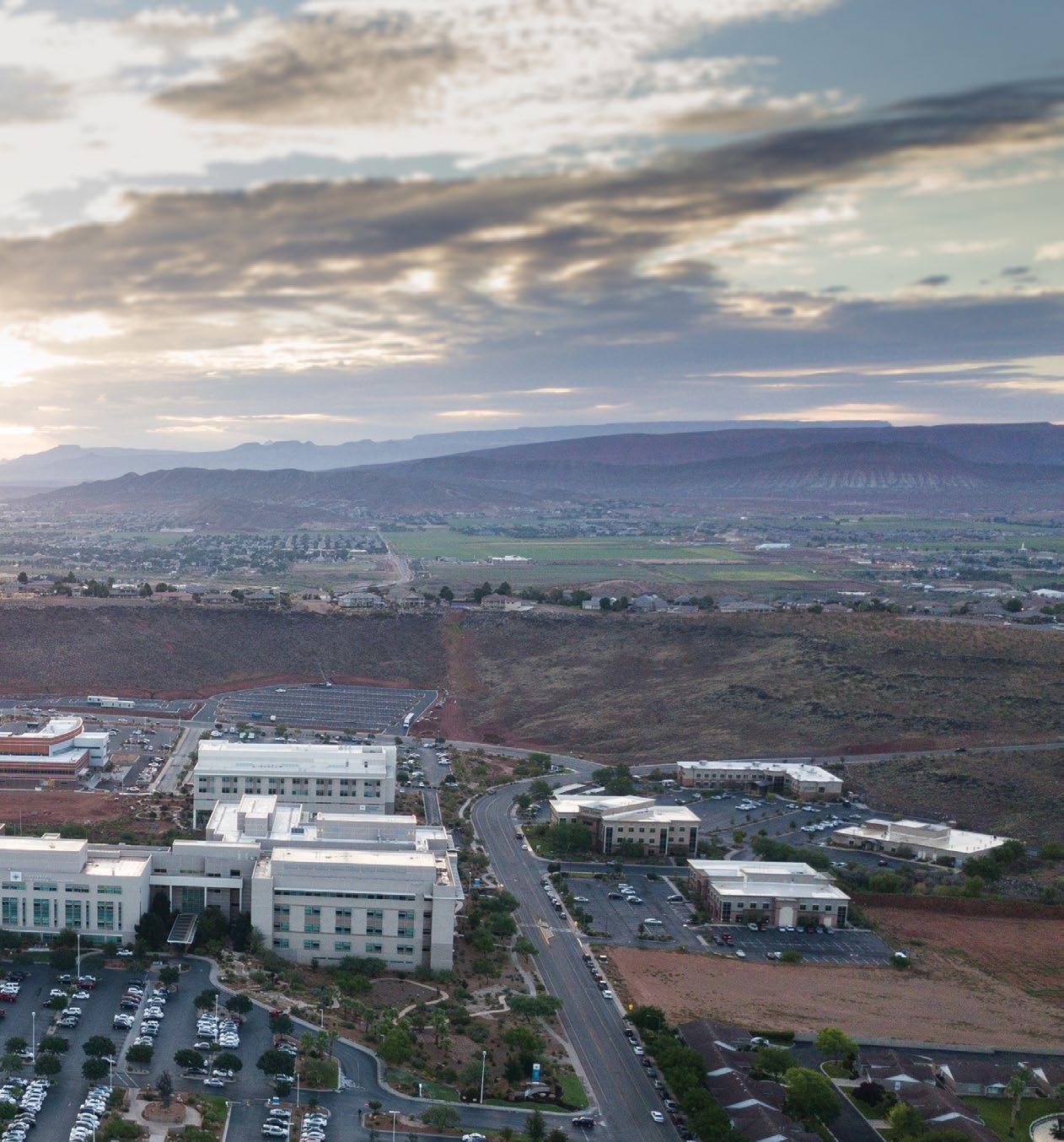
5 minute read
Over the Ridge
When I was a very little boy growing up on 600 South in St. George, I’d step out my front door and look eastward down the dusty street to where it disappeared into dense brush and creosote. Sometimes I’d walk to that ragged edge of town where the thicket began and look beyond it to the long flat ridge stretching north and south on the east rim of the valley. I was reluctant to enter into that desert jungle, but I dreamed of someday getting to the foot of that black ridge and climbing to the top. I wondered how many days it would take me. I was consumed by the mystery of what might lie on the other side.
A million years ago, a volcano erupted just north of St. George. Of course, St. George was not St. George at the time. In fact, the picturesque little valley where the heart of the city now sits lay deep beneath multiple layers of sedimentary rock. Molten lava flowed southward through two wide gullies then stopped, hardened into shiny black basalt rock, and sat firm through the ages as water, wind, and time stripped away the surrounding landscape. These days, those hard-capped ridges form the east and west rims of the St. George valley and have become the firm foundation for homes with views unrivaled in all the world.
Advertisement
I was not the first to look upon that black ridge on the east side of St. George and rub my chin. Well over a century and a half ago, when my ancestors ventured into the Virgin River Basin, they had to figure out a way to get wagons across it. At some point between the mid 1850s and late 1861, when the company of more than 300 families arrived, some sort of road must have been roughed out over the ridge. Later, in the early 1900s, a tunnel was built through the ridge north of where Interstate 15 cuts through it today. The tunnel was used for decades, but its importance began to decline about the time my earliest memories kicked in. When the cut that we pass through today was blasted out of the ridge and the highway was rerouted through it, the tunnel became a relic.
As I grew older, my friends and I began to venture further into the thicket along the foot of the black ridge. We could have never imagined a Target, a Lowe’s, the headquarters of an airline, or a sprawling and towering Intermountain Regional Medical Center in that enchanted forest where we wound our way through the maze of brush, chasing rabbits the day long. Sometimes we would venture up the side of the ridge and find a spot with a fine view of the valley. We would build a sturdy fort of basalt rock and catch lizards and horny toads. But by then we were mostly on the lookout for Russian tanks.
As I grew older, I began to wonder where it was that the pioneers first crossed that ridge. From history, I knew it was somewhere down toward the southern end. I knew the first few wagons came over the ridge in late November 1861, and most of the rest of the long caravan arrived on December 1.
On a bright winter day several years ago, a friend called wondering if I knew where the pioneers had crossed the ridge when they first entered the valley. I told him I thought I had a general idea, but I certainly could not pinpoint it. He said he’d just made a wonderful discovery and wanted to show it to me. We agreed to meet in the Medical Center parking lot on the morning of December 1.

By Lyman Hafen


He was waiting for me at the appointed hour. I offered to take my car, but he only chuckled and told me to hop into his little SUV. We pulled onto 700 South and headed east up Foremaster Ridge. When we topped out, he made a hard left across the center line and jumped the curb into the basalt, creosote, and sagebrush. We bounced through the sharp black rocks for several yards until we came to the remains of an ancient road. We pulled onto the road and began to follow it down the ridge.
We rumbled down the remnant of road, marveling all the way at what the valley must have looked like to those weary travelers on that first day of December in 1861. I recalled, as we worked our way down, that a baby had been born nearby during those first days. In nothing but a wagon box and with only a few quilts—and not a man-made structure in sight—Agnes Pymm endured labor and miraculously gave birth in that vicinity on a cold December day much like this. With her husband John by her side, her painful sighs and the cries of the newborn baby would have been audible from the parking lot of what is now one of the most advanced medical centers in the Southwest.
When we reached the bottom we drove to the edge of the modern road and waited at the curb for the endless line of traffic coming off Foremaster Ridge.
Finally, we threw safety and sanity out the window and spun off the pioneer road onto 700 South, whipping into a narrow opening between cars, barely avoiding a collision.


About the Author Lyman is the author of a dozen books intent on connecting landscape and story in the American Southwest. He is executive director of the Zion National Park Forever Project, and is past president of the national Public Lands Alliance. He’s been writing and publishing for more than 35 years, with several hundred magazine articles in publications ranging from Western Horseman to Northern Lights, and was the founding editor of St. George Magazine in 1983. He’s been recognized on several occasions with literary awards from the Utah Arts Council, and won the Wrangler Award from the National Cowboy and Western Heritage Museum. He lives in Santa Clara, Utah, with his wife Debbie, and together they have 6 children and 15 grandchildren.












